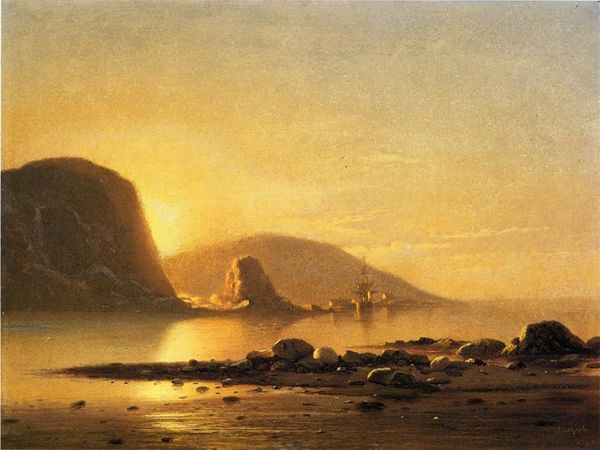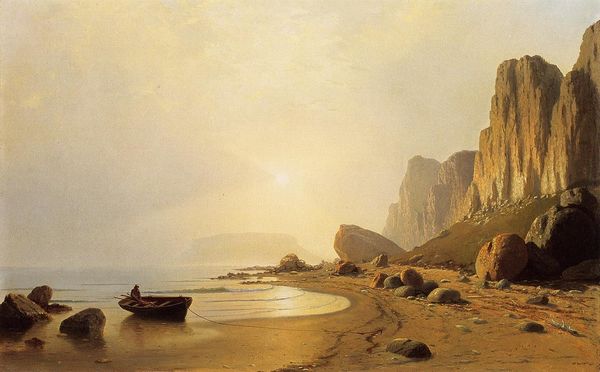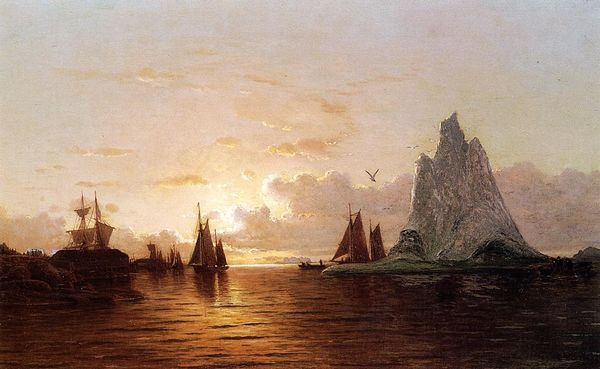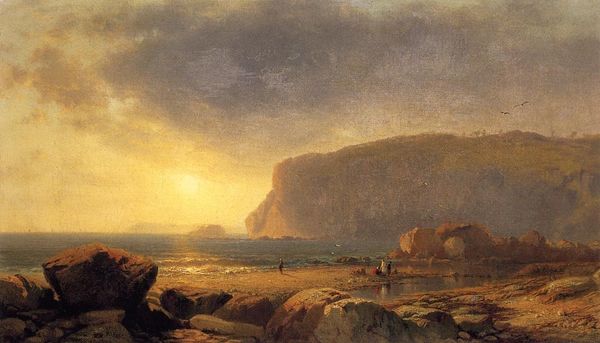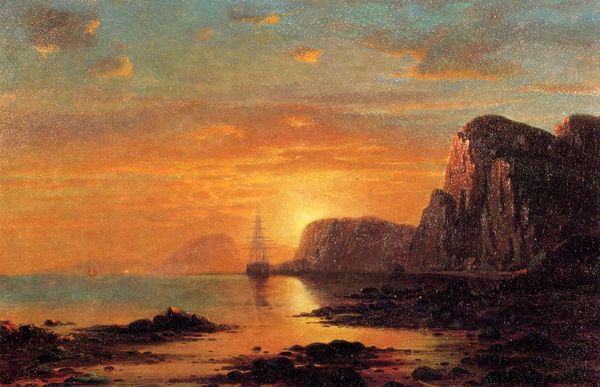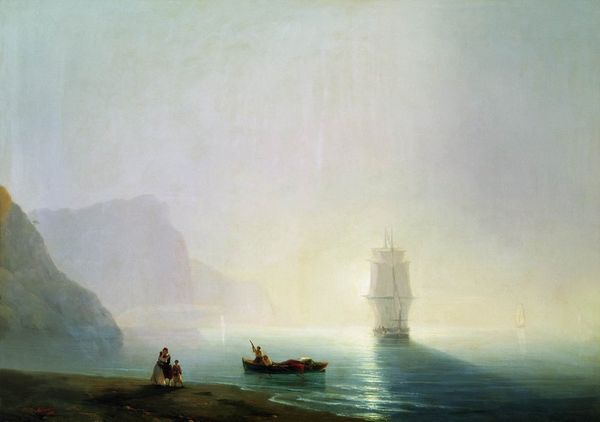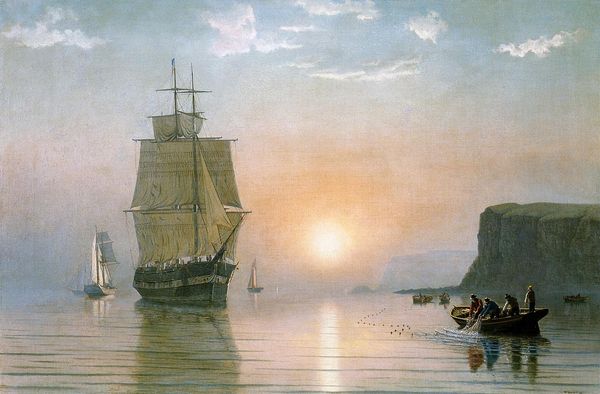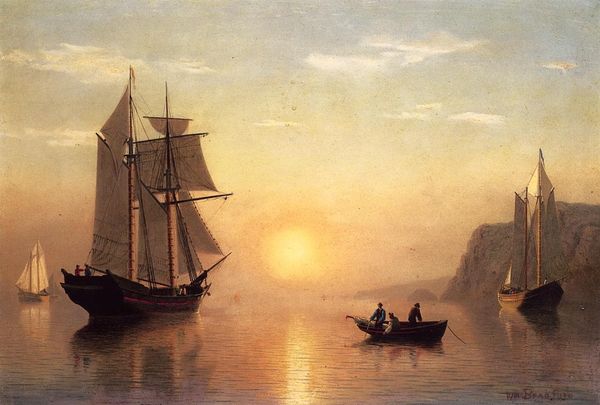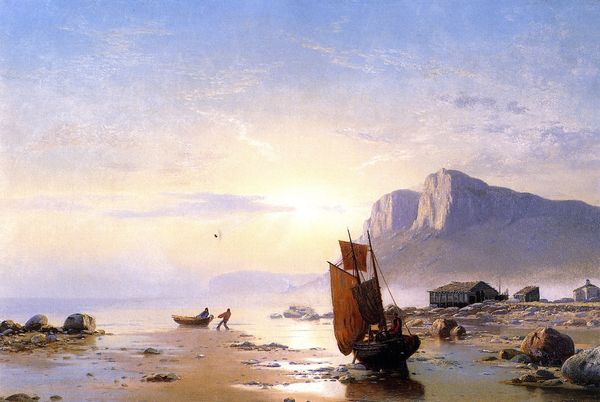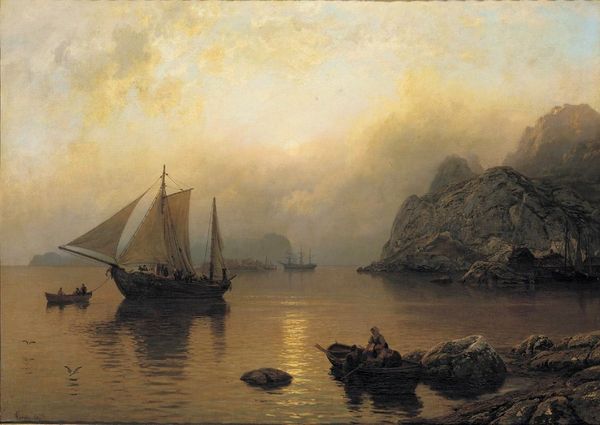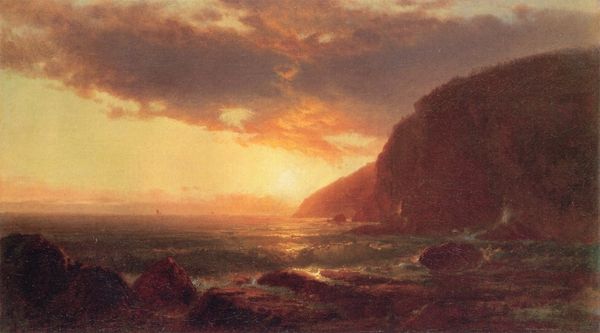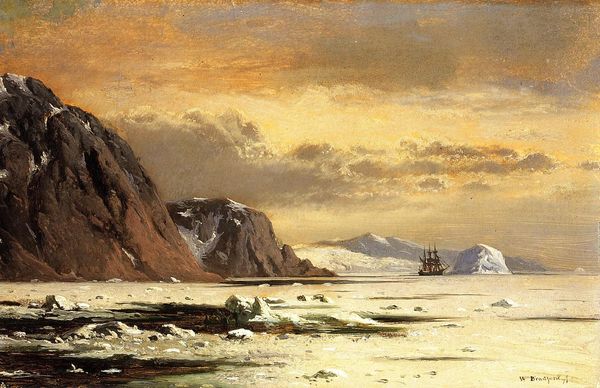
Copyright: Public domain
Editor: This is William Bradford's "The Coast of Labrador," painted in 1864. The stark rocks and shipwrecked boat create such a desolate, almost romantic feel. How do you interpret this work, considering the time it was made? Curator: Bradford's depiction is particularly interesting when we think about the historical context of landscape painting and westward expansion. While often these paintings emphasized sublime grandeur and possibility, here we see a more somber view of the Arctic. Do you think the "desolate" feeling you pick up on reflects something broader? Editor: Possibly! Was Bradford's work making some sort of statement? Curator: The Hudson River School, of which Bradford was a part, often wrestled with the human impact on the landscape. So, the shipwreck, rather than solely romantic ruin, could function as a signifier of human vulnerability against the forces of nature and the limits of expansion. Think of the economic ambitions driving exploration northward during this period – did Bradford buy into this unreservedly? Editor: I hadn't considered that. So, it's less a straightforward celebration of nature and more a commentary on humanity's ambition, maybe? Curator: Precisely. The painting operates within, yet also slightly against, prevailing ideologies about progress. Consider the cultural reception; a dramatic seascape with a cautionary undercurrent was quite palatable to a certain segment of the public. But was Bradford intentionally offering such a complex reading? These are the questions that historical analysis pushes us to consider. Editor: That gives me a new perspective. I came in seeing a pretty picture and I now understand the deeper cultural context it was meant to reach at the time. Curator: It is always helpful to look for ways artists position themselves in complex situations that might affect their popularity among both collectors and institutions.
Comments
No comments
Be the first to comment and join the conversation on the ultimate creative platform.
